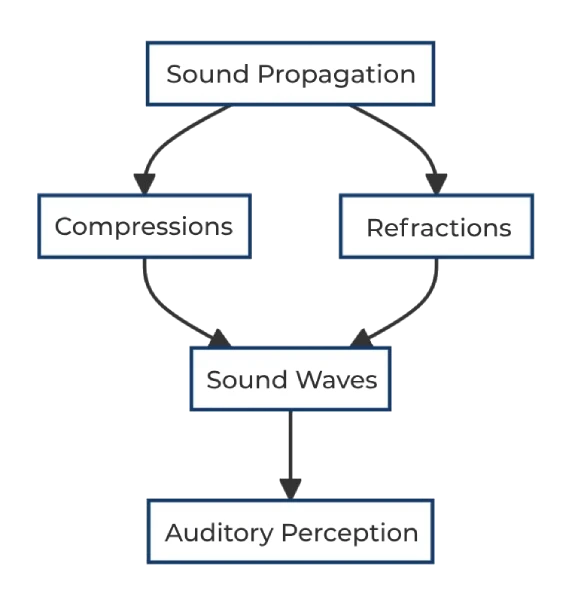Published by Mélodie, Acoustic Engineer and Writer at Sound Escape.
Welcome to Sound Escape, the expert in custom soundproof curtains.
Soundproof curtains are increasingly popular in both domestic and professional spaces due to their ability to effectively reduce ambient noise. But how exactly do they work? To answer this question, let’s dive into the world of acoustics and material science.
The Basics of Sound Propagation
To understand how soundproof curtains work, it’s first important to understand how sound propagates.
Sound is a mechanical wave that travels through mediums like air, water, or solids.
It consists of compressions and rarefactions of molecules, which create a sound wave that we perceive with our hearing.
This graphic will help you understand how our ears perceive sound once it has propagated:

Materials and Design of Soundproof Curtains
Soundproof curtains are made from materials specifically designed to absorb, deflect, or block sound waves. These materials are often multi-layered and include dense fabrics, absorbent materials like fiberglass, and sometimes even reflective materials.
Sound Absorption
Absorbent materials capture sound waves and convert their energy into heat, thereby reducing their amplitude. This is often achieved through dense fabrics and acoustic foams.

Diffraction and Reflection
Some soundproof curtains also use reflective materials to deflect sound waves away from the area to be isolated. This is a process similar to the reflection of light. Diffraction, on the other hand, scatters sound



Pingback: Rideau Phonique : Est-ce Efficace ? | Sound Escape